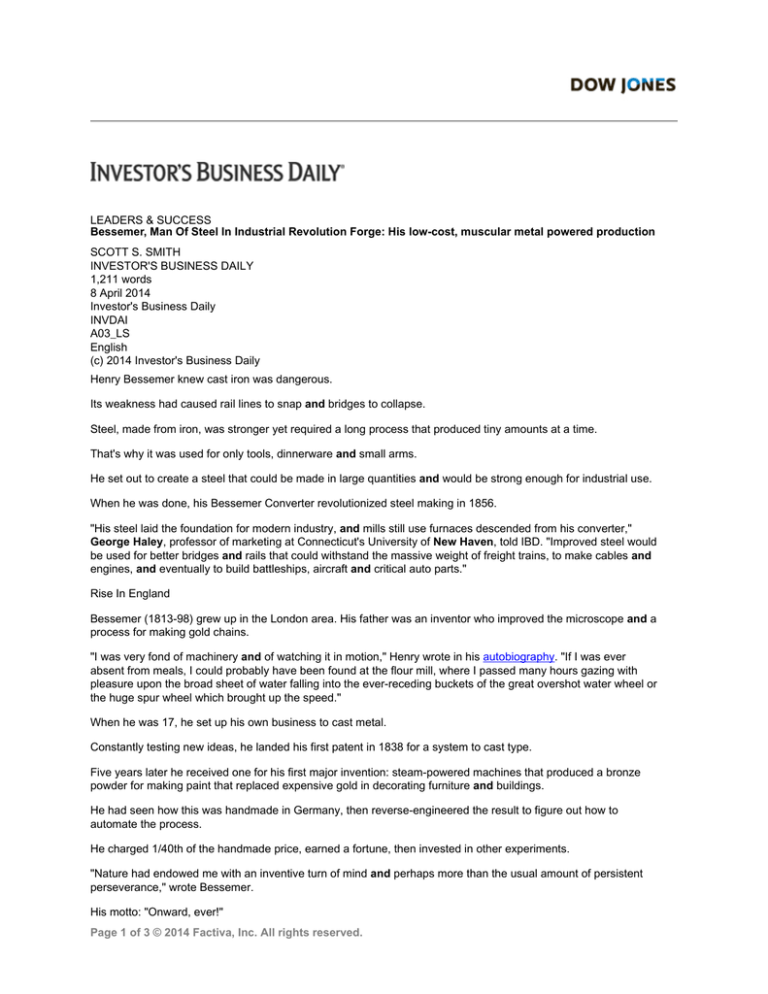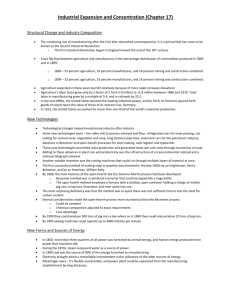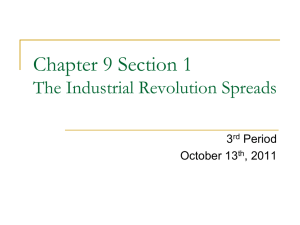
LEADERS & SUCCESS
Bessemer, Man Of Steel In Industrial Revolution Forge: His low-cost, muscular metal powered production
SCOTT S. SMITH
INVESTOR'S BUSINESS DAILY
1,211 words
8 April 2014
Investor's Business Daily
INVDAI
A03_LS
English
(c) 2014 Investor's Business Daily
Henry Bessemer knew cast iron was dangerous.
Its weakness had caused rail lines to snap and bridges to collapse.
Steel, made from iron, was stronger yet required a long process that produced tiny amounts at a time.
That's why it was used for only tools, dinnerware and small arms.
He set out to create a steel that could be made in large quantities and would be strong enough for industrial use.
When he was done, his Bessemer Converter revolutionized steel making in 1856.
"His steel laid the foundation for modern industry, and mills still use furnaces descended from his converter,"
George Haley, professor of marketing at Connecticut's University of New Haven, told IBD. "Improved steel would
be used for better bridges and rails that could withstand the massive weight of freight trains, to make cables and
engines, and eventually to build battleships, aircraft and critical auto parts."
Rise In England
Bessemer (1813-98) grew up in the London area. His father was an inventor who improved the microscope and a
process for making gold chains.
"I was very fond of machinery and of watching it in motion," Henry wrote in his autobiography. "If I was ever
absent from meals, I could probably have been found at the flour mill, where I passed many hours gazing with
pleasure upon the broad sheet of water falling into the ever-receding buckets of the great overshot water wheel or
the huge spur wheel which brought up the speed."
When he was 17, he set up his own business to cast metal.
Constantly testing new ideas, he landed his first patent in 1838 for a system to cast type.
Five years later he received one for his first major invention: steam-powered machines that produced a bronze
powder for making paint that replaced expensive gold in decorating furniture and buildings.
He had seen how this was handmade in Germany, then reverse-engineered the result to figure out how to
automate the process.
He charged 1/40th of the handmade price, earned a fortune, then invested in other experiments.
"Nature had endowed me with an inventive turn of mind and perhaps more than the usual amount of persistent
perseverance," wrote Bessemer.
His motto: "Onward, ever!"
Page 1 of 3 © 2014 Factiva, Inc. All rights reserved.
Bessemer's lesson is to analyze how things are made, improve the process and avoid patent infringement.
In 1853, the Crimean War between Britain and Russia prompted Bessemer to invent a better artillery shell.
Iron cannons were exploding. He wanted to make them with steel.
Since the British army wouldn't fund research, he turned to an ally: Emperor Napoleon III, of France.
"Steel is an alloy primarily of iron with other trace elements, the most important of which is carbon," said Bernard
Carlson, author of the Teaching Co. DVD "Understanding the Inventions That Changed History." "Carbon and
other elements act as hardening agents, and by varying the amounts, one can control qualities such as hardness,
how much strain it can take before rupturing and the maximum it can be stretched before breaking. It was first
made in India in 300 B.C., but significant problems with production, consistency and strength remained by the
mid-1800s."
For three years, Bessemer tinkered — and finally came up with the converter.
This was an egg-shaped receptacle that could hold 30 tons of molten pig iron, in which his new-style steel was
created.
"He discovered that injecting a blast of cold air into molten iron touched off a violent reaction that decarbonized
the iron within minutes," wrote Charles Morris in "The Dawn of Innovation." "Then adding a small amount of
carbon back produced excellent steel."
Skeptics were sure Bessemer's steel wasn't as strong as he purported. While securing several patents, he tried to
get ironmasters to use his invention, but most weren't interested.
So in 1858 he built his own steelworks at Sheffield in central England. It produced 30 tons of high-grade steel per
hour, the first time it came out in large quantities.
This let him get his cost down to just 7 pounds sterling per long ton (2,240 pounds in weight) and he sold it for 40
pounds, undercutting others by 10-15 pounds. The competition caved, licensing the process, and eventually his
royalties totaled 1 million pounds (worth $177 million today).
Full Speed Ahead
"Bessemer was unstoppable and failure was not an option, the mantra of all successful inventors," said Patrician
Nolan-Brown, author of "Idea to Invention." "He had a lot of rejection, but an essential component of innovators is
that they have to become very good salespeople. They also need to think far ahead of the competition, update
their ideas and never be complacent."
Bessemer's lesson is not to be discouraged by uninformed naysayers.
"A particular challenge was that steel cannot be cooled down and reheated later when you want to make
something from it, so you need to cast it or roll it right away into rails, girders, sheets or wires," said Carlson, a
professor of business history at the University of Virginia. "Andrew Carnegie addressed this challenge the best
when he entered the U.S. industry in the 1870s."
America would become the center for advanced steel making.
A New World
"Alexander Lyman Holley almost single-handedly dragged America into the steel age," wrote Morris. "He
encountered the Bessemer process on a visit to Europe and arranged to act as Bessemer's U.S. agent. That
required mediating substantial U.S. patent challenges, which were resolved by the formation of a patent-pooling
trust to oversee compliance and collect royalties. Holley then designed most American steel plants with
innovations that maximized production of high-quality products, his signature one being Andrew Carnegie's Edgar
Thompson works near Pittsburgh, opened in 1875."
In 1884, the Home Insurance building in Chicago became a forerunner to skyscrapers. With steel in its, it climbed
10 stories.
By then, the U.S. was covered by railways, some of them built with steel, with 18,000 locomotives hauling freight,
and 22,000 trains carrying passengers.
Page 2 of 3 © 2014 Factiva, Inc. All rights reserved.
The Bessemer Converter and other innovations, such as the open hearth process, sparked global demand. In
1870, 500,000 tons of steel were made worldwide.
In 1900, the figure reached 28 million tons, with America overtaking Britain as the leader in production.
Bessemer built a fortune from his steel, but he didn't rest on his laurels. He went on to amass 129 patents
covering, among other things:
• A better way of making plate glass.
• Steam-driven fans for ventilating mines.
• A train's connecting cover that let passengers move from car to car.
• Waterproofing of fabrics.
• An advanced telescope.
• A stabilizing mechanism for a ship's cabin to beat seasickness.
Bessemer's final lesson is that anything can be improved.
He was knighted by Queen Victoria in 1879 and became a member of the Royal Society at the same time. Two
decades later, he died at age 85.
"He was one of the few inventors who was also a good businessman," said Haley, "and could realize a great
profit in his own lifetime."
Document INVDAI0020140408ea480000d
Search Summary
Text
"george haley" and "new haven"
Date
In the last 3 months
Source
All Sources
Author
All Authors
Company
All Companies
Subject
All Subjects
Industry
All Industries
Region
All Regions
Language
English
Results Found
5
Timestamp
14 April 2014 13:30
Page 3 of 3 © 2014 Factiva, Inc. All rights reserved.





